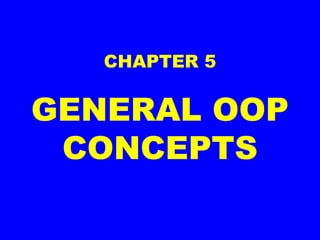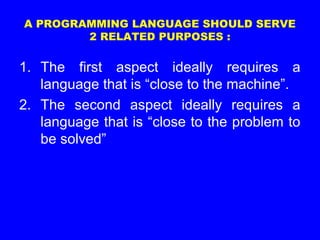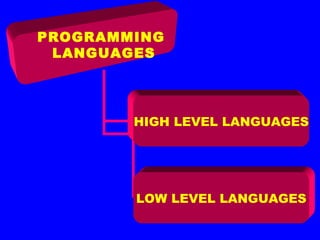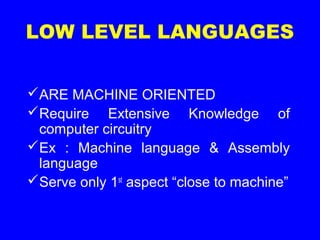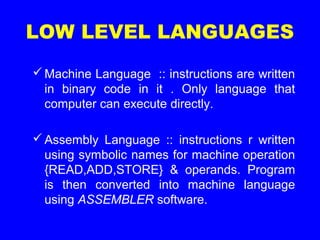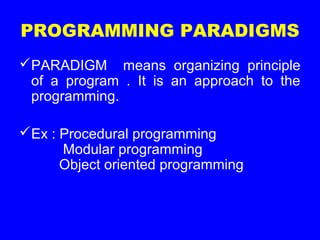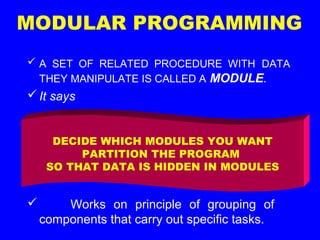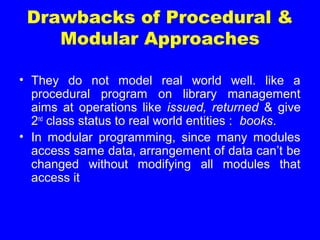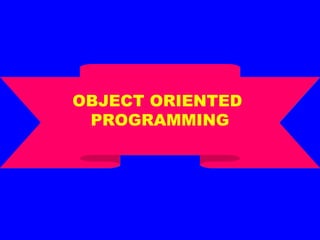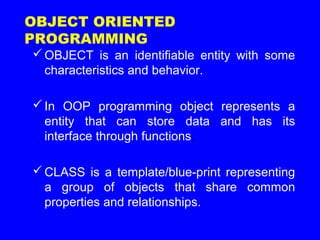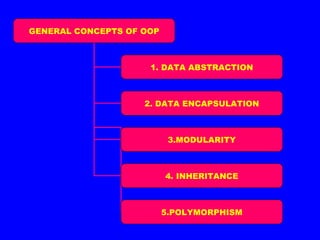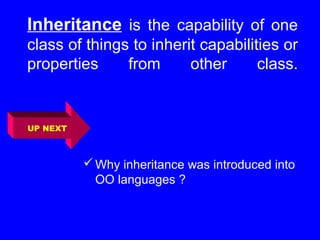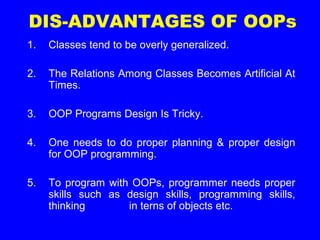This document provides an overview of object-oriented programming concepts including:
1. It discusses the evolution of programming languages from low-level languages close to the machine to high-level languages close to the problem being solved.
2. Key concepts of object-oriented programming like encapsulation, abstraction, inheritance and polymorphism are explained.
3. The advantages of OOP like reusability, easy maintenance and modeling real-world problems are highlighted along with some disadvantages like over generalization of classes.
![WEL COME
PRAVEEN M JIGAJINNI
PGT (Computer Science)
MCA, MSc[IT], MTech[IT],MPhil (Comp.Sci), PGDCA, ADCA,
Dc. Sc. & Engg.](https://image.slidesharecdn.com/5generaloopconcepts-150410072453-conversion-gate01/85/General-OOP-Concepts-1-320.jpg)

